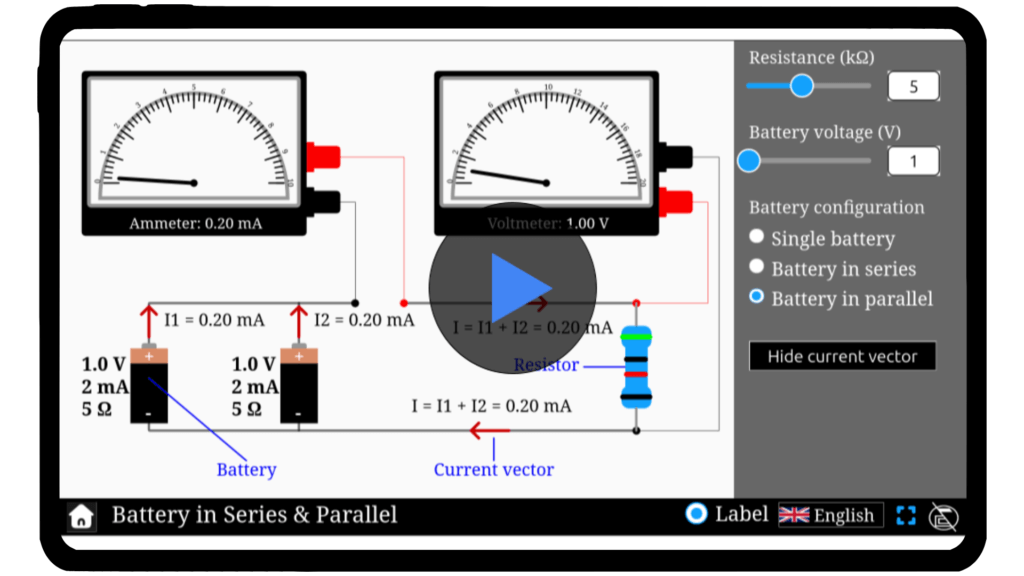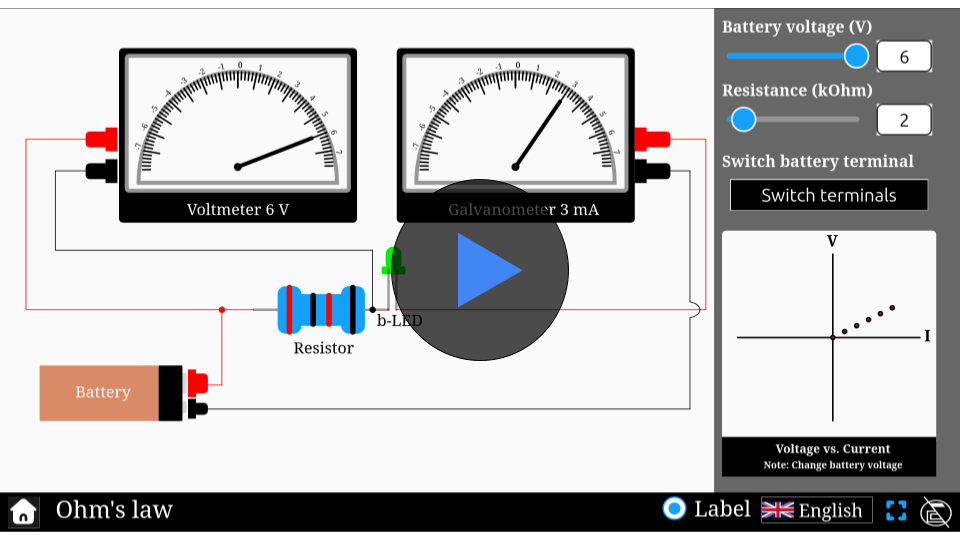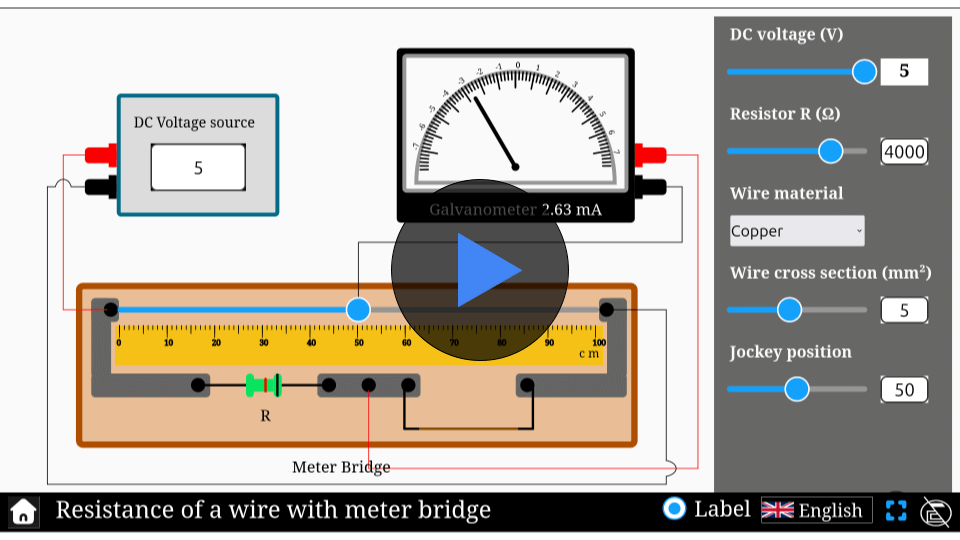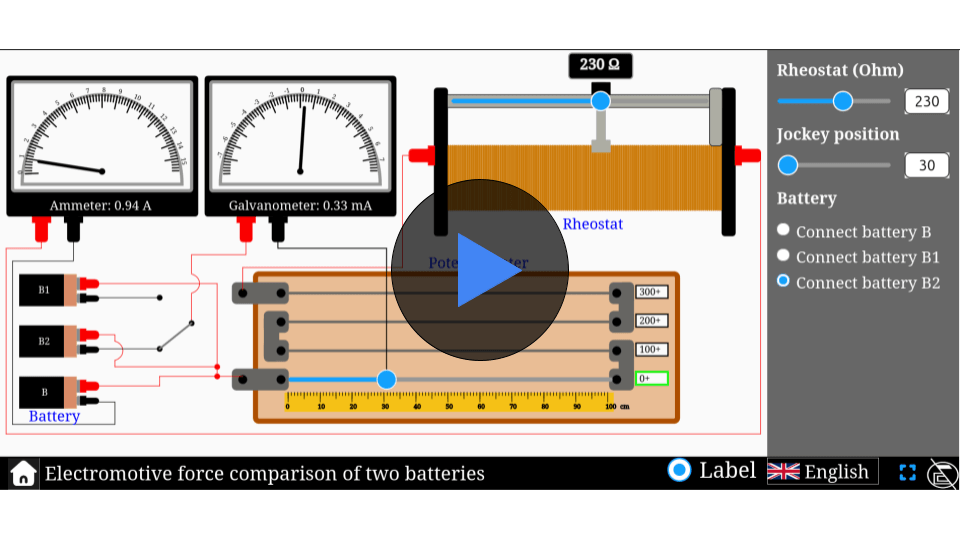Battery in series & parallel simulator
Experiment with the impact of battery configurations! Learn how voltage and current change when batteries are connected in series or parallel using our interactive simulator.
Battery in series & parallel
Batteries are the backbone of modern devices, from flashlights to electric vehicles. But how does connecting batteries in different ways affect their performance? Dive into the world of electrical circuits with our Battery in Series and Parallel Simulator. Experiment with different configurations, observe the impact on voltage and current, and uncover the science behind powering devices efficiently. Start exploring the secrets of batteries today!
\[
V_{\text{series}} = V_1 + V_2
\]
\[
V_{\text{parallel}} = V_1 = V_2
\]
Mathematical description
where:
- \( V_{\text{series}} \) is the voltage across the circuit when batteries are connected in series.
- \( V_{\text{parallel}} \) voltage across the circuit when batteries are connected in parallel.
- \( V_1 \) is the voltage of first battery
- \( V_2 \) is the voltage of second battery
Simulator
Dive into the science of battery configurations with our interactive Battery in Series and Parallel Simulator!
Interactive Physics Simulator – Battery in Series and Parallel
🌟 You May Also Like
Suggested experiments and activities based on your progress...
FAQs on Battery in Series and Parallel
Qus 1. What happens when batteries are connected in series?
When batteries are in series, their voltages add up while the current capacity (Ampere-hour) remains the same. Example: two 1.5V batteries give 3V total.
Qus 2. What happens when batteries are connected in parallel?
In parallel, the voltage stays the same, but the current capacity increases. In a parallel connection, each battery has its own path to supply current, so they share the load. This means their Ampere-hour (Ah) ratings combine, allowing the system to deliver current for a longer time. adds up, allowing longer usage time.
Qus 3. Why does current capacity stay the same in series?
In a series connection, all batteries are part of one single path, so the same current flows through each. The total voltage adds up, but the current capacity (Ah) remains that of a single battery.
Qus 4. Why does current capacity add up in parallel?
In a parallel connection, each battery has its own path to supply current, so they share the load. This means their Ampere-hour (Ah) ratings combine, allowing the system to deliver current for a longer time.
Qus 5. Why is voltage higher in series but not in parallel?
In series, voltages add end-to-end; in parallel, all positive terminals are connected together, keeping voltage the same.
Qus 6. Which configuration is better for more power—series or parallel?
Use series for higher voltage (e.g. LED circuits), and parallel for longer battery life (e.g. power banks).
Qus 6. What happens when two batteries of different voltages are connected in parallel in a circuit?
Connecting two batteries of different voltages in parallel is unsafe. The higher voltage battery will force current into the lower one, causing overheating or damage.
According to Kirchoff’s Voltage Law, in a parallel connection, voltage across all elements should be equal. Different battery voltages in parallel break this rule, leading to circuit instability.
Therefore, we should use batteries of the same voltage and type for safe parallel connections.





There’s a quality in your writing that transcends the typical bounds of literature. It doesn’t simply convey ideas — it invites the reader to explore them from within, to sit with them in silence and feel their deeper meanings settle. This is the sort of writing that not only informs, but transforms. You’ve managed to make something as ordinary as words into a space where one can feel truly alive.